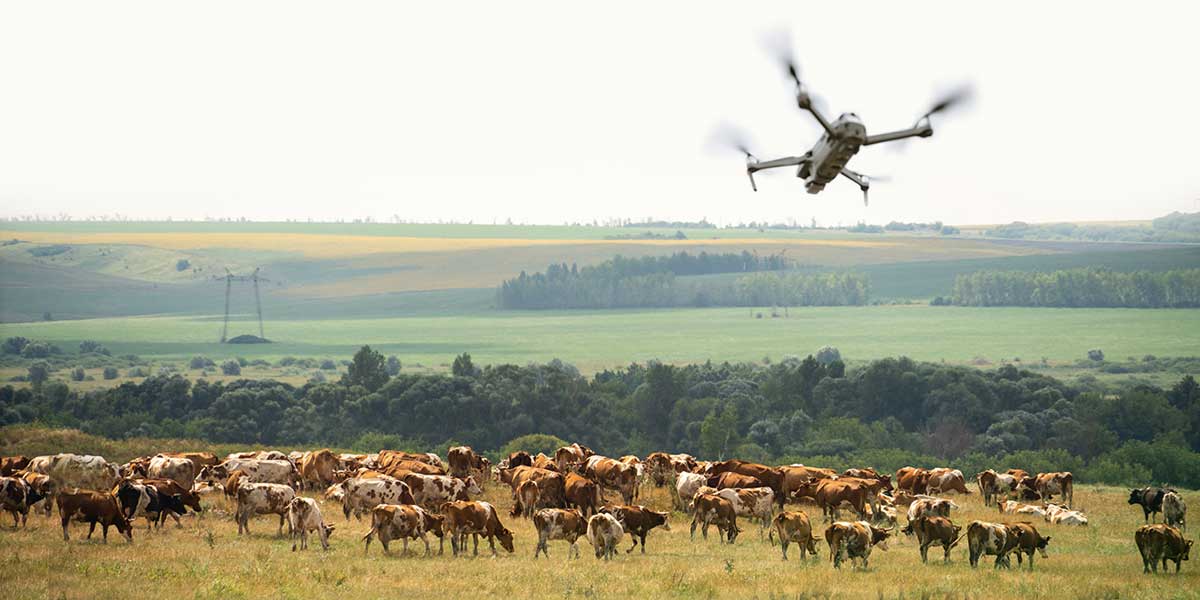HOME / Applications / Drones (UAVs) Revolutionize Livestock Mustering
Drones (UAVs) Revolutionize Livestock Mustering

Drones (UAVs) are now widely used across various industries, and is especially booming in the agricultural industry. According to the report from MarketsandMarkets, the agricultural drone market size is predicted to grow at a CAGR of 31.5% between 2023 and 2028, reaching a value of %17.9 billion by 2028 from a projection of 4.5 billion in 2023.
For farmers in New Zealand, Australia and Britain, drones (UAVs) are not just a toy – they' re an efficient and vital daily tool. An innovate application for drone technology is livestock mustering. In recent years, farmers have started to employ drone to muster sheeps or cattles by recording dog barks, and playing the sound through the drone or throwing sheep nuts under the drone' s path to lure the livestocks back to the flock. And in 2024, SkyKelpie, a world' s first drone-shepherd, successfully steered a cattle herd remotely. Developed by a company based in Cloncurry, Queensland, SkyKelpie demonstrated the world' s first live remote mustering to a crowd of graziers in Australia. The demonstration involed remote operation of herding drones to negate the need for field operators and herding dogs. In addition to livestock mustering, the technology also provides safety through its infrared detection and deterrance to avoid attacks from wild animals (eg. wolves, big cats, etc.). The utilization of such drone technology offers precise and efficient mustering, and a comfortable and safe environment for the operator.
How does Drone-shepherd Work?
The drone-shepherd is an unmanned aerial vehicle (UAV) that can be flown remotely, or AI controlled, and are equipped with a variety of sensors and cameras. They can move animals from one pasture to another either by playing dog barking sounds or by luring strays with treats to introduce them back into the flock. In addition, they can also act as a deterrent to wild animal attacks.
One of the major considerations for drone-shepherd is its flight time. The longer the flight time, greater the coverage area, and by utilizing AI to set and control the flight path to avoiding zigzaging, it can also contribute to additional flight times. The drone' s payload capacity and connectivity offer the ability to carry and connect to different devices such as sensors, cameras, etc., thus making the AI drone more capable in the field.
Neousys FLYC-300 is a super lightweight computer weighing merely 297 grams for more flight time and carry more payload. Powered by NVIDIA® Jetson Orin NX to provide 100 TOPS AI performance, it is also catered to the diverse needs of cameras and sensors like RGB, hyperspectral, infrared, LiDAR, and 3D cameras by boasting a versatile array of connectivity options, including two Ethernet, two USB3.2, and two GMSL2 ports. To command the flight of the drone, FLYC-300 can communicate seamlessly with the flight controller through configurable UART, Ethernet, and CAN ports. It also accommodates a wide voltage input range from 4S to 14S battery packs via the XT30 DC-IN connector. The system is compatible and supports installation of 5G/ 4G modules for real-time transmission of images, videos, and data.
